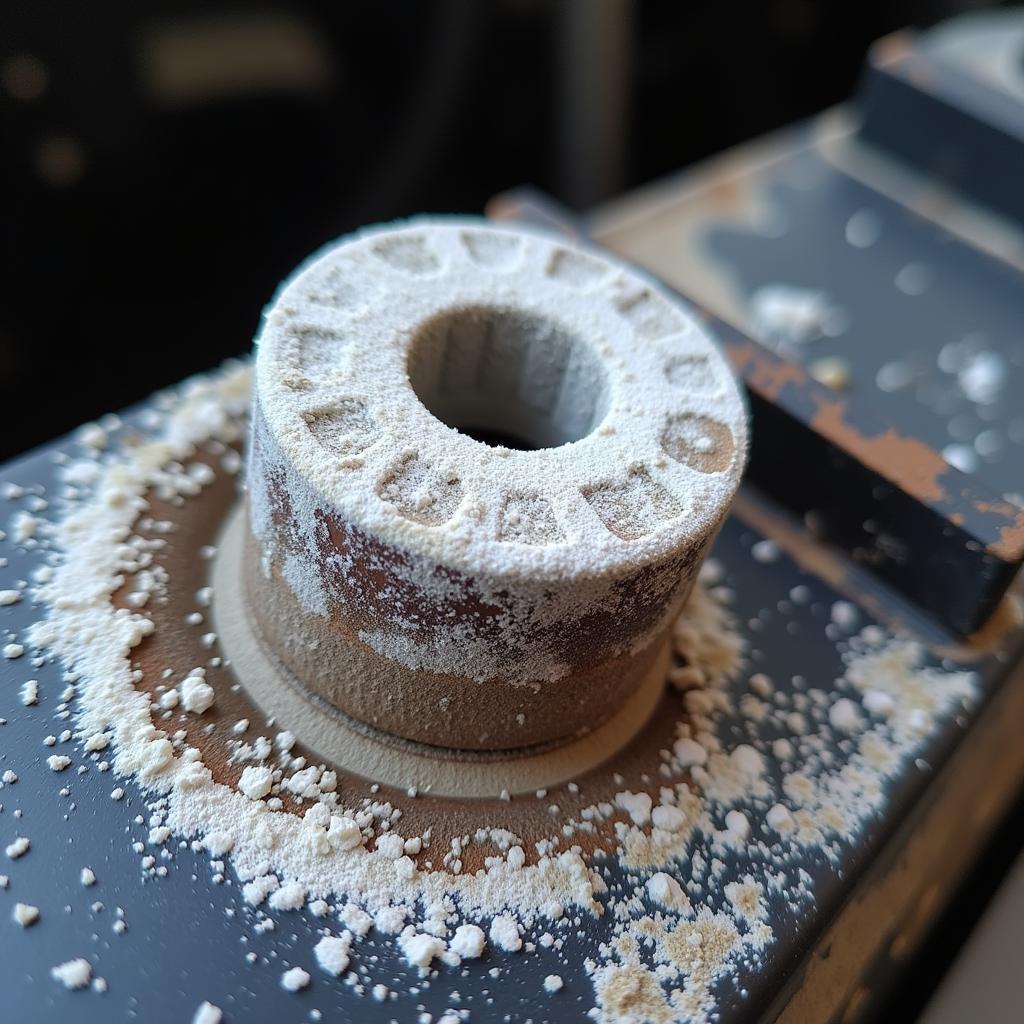You’re driving along, and suddenly, the brake warning light pops up on your dashboard. It can be a nerve-wracking experience, especially if you’re unsure what it means. You slam on the brakes, and everything seems fine. So, why is the “check brake” warning on if the brakes are okay? Don’t panic! This article will guide you through the possible reasons for this warning and provide solutions to get you back on the road safely.
Understanding the Brake Warning Light
Before diving into the specifics, it’s crucial to understand what triggers that little red light on your dashboard. Your car’s braking system is designed with safety in mind. When the brake warning light illuminates, it’s signaling a potential issue that needs attention. This doesn’t always mean your brakes are about to fail. However, it’s essential to investigate the cause to ensure your safety and prevent further damage.
Common Reasons Your “Check Brake” Light is On
Even if your brakes feel fine, the warning light could be triggered by various factors. Here are some of the most common culprits:
-
Worn Brake Pads: One of the most frequent reasons for the brake warning light is worn brake pads. Most vehicles have sensors in the brake pads that trigger the light when they wear thin, indicating it’s time for a replacement.
-
Low Brake Fluid: Brake fluid is the lifeblood of your braking system. It transmits the force from your foot on the brake pedal to the wheels, allowing you to stop. A leak in the system or low brake fluid level can cause the warning light to come on.
-
Faulty Brake Light Switch: Your brake lights and the brake warning system are often connected. A malfunctioning brake light switch can cause your brake lights to stay on or not illuminate at all, triggering the warning light on your dashboard.
-
ABS Issue: Modern vehicles are equipped with an Anti-lock Braking System (ABS) for enhanced safety. If there’s a problem with the ABS, such as a faulty sensor or module, the brake warning light might come on.
-
Parking Brake Engaged: It might seem obvious, but sometimes the simplest explanation is the right one. If you accidentally left your parking brake partially engaged, it could trigger the warning light.
Troubleshooting the “Check Brake” Light
Now that you have a better understanding of why the light might be on, let’s discuss how to troubleshoot the issue:
-
Check Your Parking Brake: The first and easiest step is to make sure your parking brake is fully disengaged. If the light goes off, problem solved!
-
Inspect Your Brake Fluid: Locate the brake fluid reservoir under the hood (refer to your owner’s manual for its exact location). Check the fluid level. If it’s low, add the appropriate brake fluid (DOT 3 or DOT 4, as specified in your manual). However, if the fluid level is significantly low or you need to add fluid frequently, it indicates a leak that requires immediate professional attention.
-
Examine Your Brake Pads: Visually inspect your brake pads through the spaces between the wheel spokes. If they appear thin (less than ¼ inch of friction material remaining), it’s time for a replacement.
-
Seek Professional Help: If you’ve checked the above and the brake warning light persists, it’s best to consult a qualified mechanic. Issues like a faulty brake light switch or ABS problems require specialized knowledge and tools to diagnose and repair correctly.
“Check Brake” Light Still On After New Brakes and Rotors?
Sometimes, even after replacing your brake pads and rotors, the warning light might stay on. This could be due to:
-
Faulty Sensor: The brake pad wear sensor might be damaged or improperly installed, causing it to send a false signal.
-
Wiring Issue: There could be a problem with the wiring harness connected to the brake system, leading to communication errors.
-
Control Module Malfunction: In some cases, a faulty ABS control module or another related module might be the culprit.
If you’re experiencing this issue, it’s crucial to take your vehicle back to the mechanic who performed the brake job or a qualified technician specializing in automotive diagnostics. They can properly diagnose and address the underlying problem.
Remote Diagnostics and Software Solutions
Advancements in automotive technology have led to the development of remote diagnostics and software solutions that can help diagnose and, in some cases, even fix brake warning light issues.
-
Remote Diagnostics: Some manufacturers offer remote diagnostic services where technicians can remotely access your car’s computer system to identify the cause of the warning light.
-
Software Updates: Occasionally, brake warning light issues can be resolved with a simple software update. Manufacturers regularly release updates to improve vehicle performance and address known software glitches.
Preventing Future Brake Issues
While some brake problems are unavoidable, proactive maintenance can significantly reduce their likelihood:
-
Regular Brake Inspections: Schedule routine brake inspections with a qualified mechanic, especially if you frequently drive in heavy traffic or hilly areas.
-
Timely Brake Fluid Changes: Follow your manufacturer’s recommended brake fluid change intervals to ensure optimal braking performance and prevent corrosion within the system.
-
Quality Brake Pads: Invest in high-quality brake pads that are compatible with your vehicle’s make and model.
-
Address Warning Signs Early: Never ignore warning signs like squeaking, grinding, or pulsating brakes. Addressing issues early can save you time, money, and potential headaches down the road.
Conclusion
Experiencing a “check brake” warning light can be concerning, even if your brakes seem to be functioning correctly. By understanding the common causes, knowing how to troubleshoot, and prioritizing preventative maintenance, you can ensure your safety on the road. Remember, if you’re unsure about any aspect of your car’s braking system or encounter persistent warning lights, it’s always best to consult with a qualified mechanic for expert advice and repairs.

